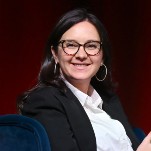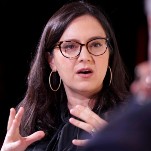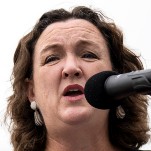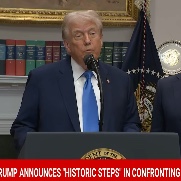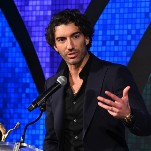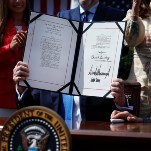Wintour & Kors Congratulate Selves For Solving Models' Health Problems
LatestLast night at Harvard, while speaking with Anna Wintour on a panel about models’ health, Michael Kors pledged to no longer use girls under the age of 16 in his shows and campaigns. It’s a step, but is it enough?
Said Wintour: “Everyone’s eyes are open and looking at the problem.” But it was hard to tell, beyond “looking at it,” what the people in power are actually doing about the problem.
The discussion, called “Health Matters: Weight and Wellness in the World of Fashion,” was moderated by Dr. David Herzog, who also moderated last month’s CFDA Health Initiative panel in New York. Herzog is the director of the Harris Center for Education and Advocacy in Eating Disorders at Massachusetts General Hospital. This man has spent his professional life examining the destruction eating disorders inflict on the lives of women. This makes the question of why he’s so far up Anna Wintour’s/Vogue‘s butt that much more compelling.
Herzog fawned over the work the CFDA’s Health Initiative has been doing in the three years since its inception in 2007. How can we see for ourselves the results of these labors? Herzog thinks you should check out the April issue of Vogue — you know, the “Shape” issue. Herzog clearly hasn’t realized that as good as it can be to see the variety of body shapes and women in that issue — when the rest of the time Vogue is trying to pass off Lara Stone as an example of body diversity — it that it is still just one issue out of 12. Nine years after the first Shape issue appeared on newsstands, have the sizes of the models in Vogue become more diverse or attainable? And outside of its debatable victories in Vogue, what else is the Health Initiative doing, really? Has it managed to get designers to abide by its suggestion to not use models under 16? No. New York is still known for its 14- and 15-year-old breakout runway stars, like Monika Jagaciak and Karlie Kloss, and the many, many other models like them who work in relative obscurity. Has the Health Initiative gotten clients to make sure healthy food is available during show season? Not really; Jenna says there was more food backstage at the Bryant Park tents last month than in seasons past, but it was still very hit-or-miss. Has the Health Initiative done anything to fundamentally shift the industry’s power dynamic more in models’ favor? No — they’re still vulnerable to their agencies’ and clients’ demands. Pretty pictures in Vogue aren’t sufficient to address these problems.
-

-

-

-

-

-

-

-

-

-

-

-

-

-

-

-

-

-

-

-

-

-

-

-

-

-

-

-

-

-

-

-

-

-

-

-

-

-

-

-

